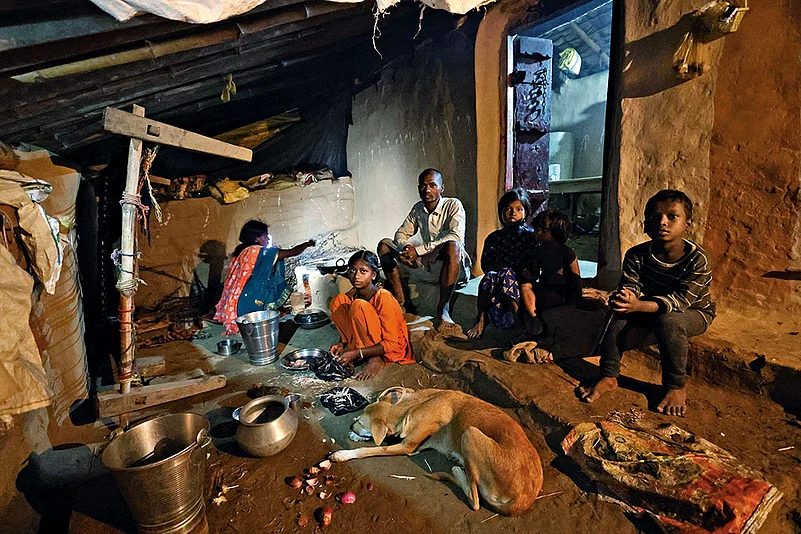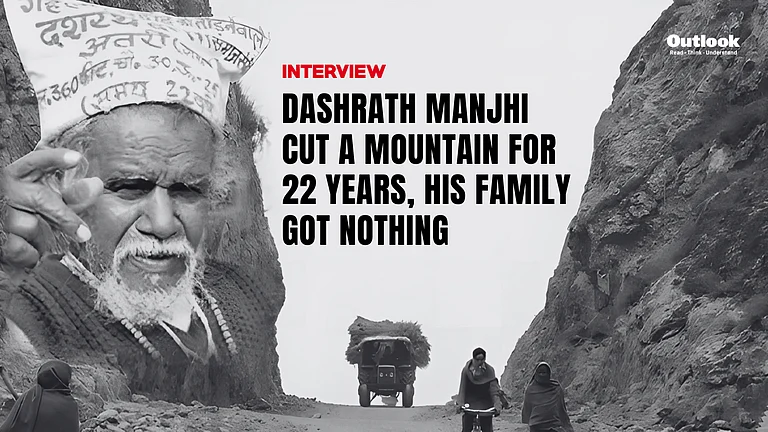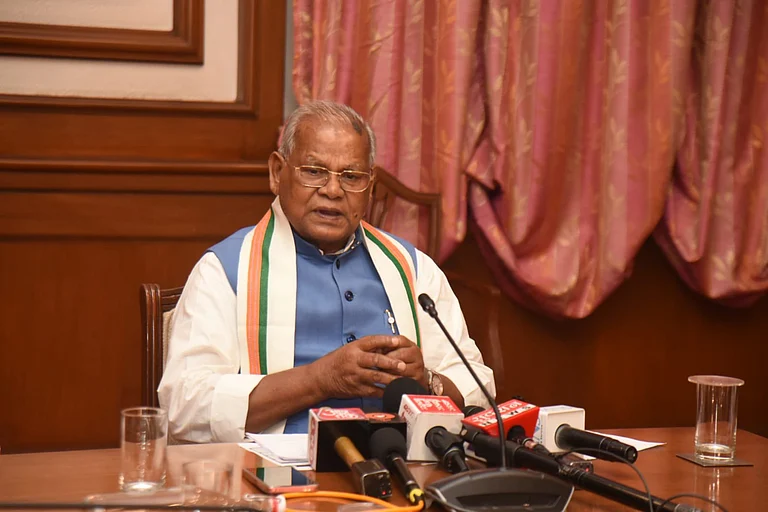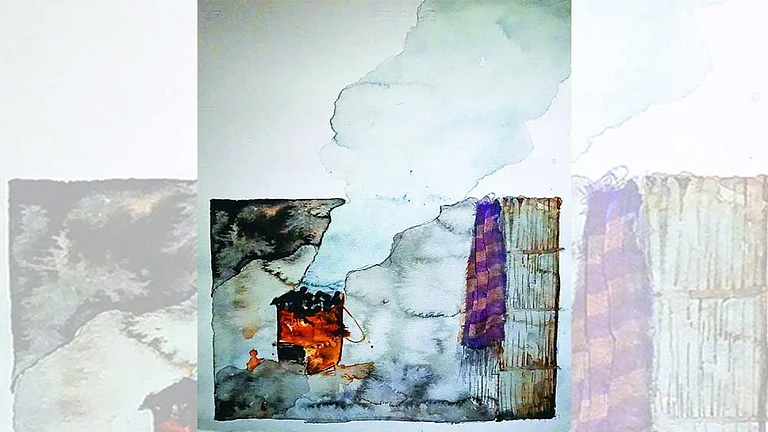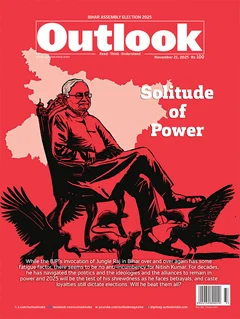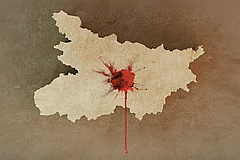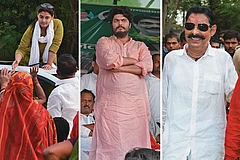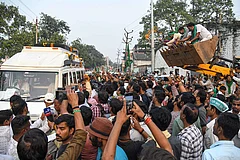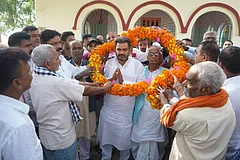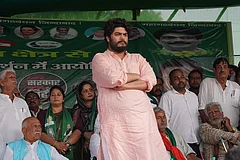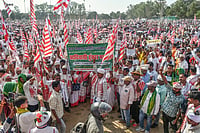
Dalits, who make up 20 per cent of Bihar’s population, hold just 1.3 per cent of government jobs, a stark reminder of structural exclusion.
Before the 1970s, Dalit voters largely supported the Congress. Later, they shifted toward regional and caste-based parties, first aligning with Lalu Prasad Yadav in the 1990s and then with Ram Vilas Paswan.
When Nitish came to power in 2005, he fragmented Dalits further by carving out the Mahadalit category to politically consolidate the most marginalised castes, including the Manjhis
For over two decades, Bihar’s political class has borrowed the legacy of Dashrath Manjhi, the “Mountain Man” who literally carved through a mountain of stone with a hammer and chisel to mine votes from memory. The name of the man who inspired the Bollywood film Manjhi–The Mountain Man, is invoked at rallies, his image is flashed on banners and promises are made in his honour.
Chief Minister Nitish Kumar once claimed to be so moved by Manjhi’s feat that he offered him his own chair, a gesture meant to bridge the symbolic distance between ruler and ruled. Union Minister Jitan Ram Manjhi, from the same community, went even further, calling Dashrath his “relative”. But when the Mountain Man died in 2007 and his son asked for nothing more than a small permanent home, the responses from both leaders revealed what truly lies beneath the surface of Bihar’s politics: empathy that ends at the microphone.
When Bhagirath Manjhi, Dashrath’s son, appealed to Nitish, saying: “You’ve glorified my father’s name across Bihar; at least help us build a house to live in,” Nitish replied dryly, “Did you not get an Indira Awas (a housing grant)?”
Later, Bhagirath approached Jitan Ram with the same plea, “Please help build us a two-room house.” The response was equally telling: “You already have a mud house, don’t you? What’s the problem living in that?”
The Forgotten Family of the Mountain Man
Back in 1992–93, Dashrath Manjhi received Rs 15,000–Rs 20,000 under the Indira Awas Yojana. With that, he built a mud house that soon collapsed during the monsoon. He continued to live amid the ruins for years, as did his son Bhagirath, his daughter-in-law and five grandchildren until just a few months ago. But it raises the question, why did this recognition come only during election season, even though Dashrath’s feat had been celebrated worldwide more than a decade earlier?
Beyond Symbolism: The Dalit Condition in Bihar
This story reveals a deeper pattern of how Bihar’s Dalits remain confined to announcements and symbolism rather than tangible progress. When Nitish came to power in 2005, he reclassified Dalit castes (except the Paswans) as Mahadalits, promising targeted upliftment. Yet among these groups, the Manjhi community continues to wait endlessly for change.
Two days before the first phase of voting, when we reached Dashrath Manjhi’s village around 8 pm, his granddaughter Anshu Kumari, 30, sat outside under a thatched verandah with her five children. Some wore torn clothes; others had none. “I studied up to intermediate (level),” Anshu said. “Because of my grandfather, the whole world knows Gahlour Hill. He cut through a mountain to build a road; the government collects tax from that road but gives nothing to the man who built it.” She went on: “Hospitals, roads and memorials are named after my grandfather, but our family got nothing—not even a job or a home.” When Rahul Gandhi told her to raise her children to make her grandfather proud, she asked in return, “Where will I educate my children from?”
The Man Who Split a Mountain
Dashrath Manjhi’s tale begins with love and loss. Born on January 14, 1934, in Gahlour village, Gaya district, he was neither educated nor wealthy. But when his wife, Falguni Devi, fell ill and died because the nearest hospital lay beyond a mountain, something inside him ignited. He vowed to carve a path through the mountain so that no one else would suffer as he did. For 22 years (1960–1982), armed only with a hammer and chisel, he toiled day after day. Villagers mocked him, but he would simply smile and say: “The mountain will fall one day.” Eventually, he carved a 110-metre-long, 9-metre-wide, 7.6-metre-deep road, connecting Gahlour to the outside world.
When Nitish Kumar heard of his feat, he personally visited Gahlour, sat beside Dashrath and even made him sit briefly in the Chief Minister’s chair—a symbolic gesture of reverence. The state covered his medical expenses and, upon his death on 17 August 2007, accorded him a state funeral. Later, a hospital, road and memorial were built in his name.
But symbolism could not feed his family. As Bhagirath recalls, “When my grandfather was dying, Nitish Kumar asked what he could do for our family. He said, ‘Why should I ask for one son, when the whole community is my family?’” The son adds, “If the government couldn’t do anything for his family, imagine what it has done for the Manjhi community at large.” In Manjhi’s case, Bhagirath did receive four bighas of land from the government, but it was barren. “Not a single grain grows,” he says.
Another Hero, Same Neglect
Like Dashrath, Laungi Bhuiyan, another member of the Manjhi community, earned fame for his grit. Over thirty years, he carved a canal through rocky terrain to channel rainwater into ponds and fields across eight to ten villages in Gaya’s Kothilwa village, once a Naxal stronghold.
His story went viral and was celebrated in national and international media. Yet when we visited his home, it found a story much like Dashrath’s—fame without fortune. His mud house still crumbled. Ministers, including Jitan Ram Manjhi, his son Santosh and daughter-in-law Deepa, had all visited, each promising a new home but none delivering.
Laungi says: “They all come, see, promise us a house and a job for my son, then leave. I only ask that one son be given a job and a home to live in.” He has four sons; the youngest, Lalu, aged 28, stays with him, while the others work as migrant labourers. A private tractor company once gifted him a tractor, which Lalu now drives to support the family—a private gesture filling the gap left by public apathy.
Statistics That Speak of Systemic Failure
The Manjhi and Bhuiyan mirror Bihar’s Dalits, who make up 19 per cent of the population, yet over 84 per cent of their households remain landless, according to the Bihar caste survey. A Tata Institute of Social Sciences (TISS) Mumbai researcher, Krishna Mohan Lal, attributes the Manjhi community’s backwardness to the absence of a traditional occupation. “Among Dalits, those with stable professions like tanning (Chamars), toddy-tapping (Pasis) or pig-rearing (Dusadhs, Paswans) had some economic base. But the Manjhis, historically known as Musahars—rat-catchers—never had a structured livelihood."
He adds that merely having a few leaders or ministers from the community does not transform their condition. “Policies need both intent and execution, something successive governments have failed to ensure.”
From Congress to Caste Politics
Before the 1970s, Dalit voters largely supported the Congress. Later, they shifted toward regional and caste-based parties, first aligning with Lalu Prasad Yadav in the 1990s and then with Ram Vilas Paswan. When Nitish came to power in 2005, he fragmented Dalits further by carving out the Mahadalit category to politically consolidate the most marginalised castes, including the Manjhis.
By appointing Jitan Ram Manjhi as Chief Minister in 2014, Nitish sought to strengthen his appeal among them. For a while, it worked. But within nine months, Manjhi was removed, prompting him to form his own party, HAM (Hindustani Awam Morcha), in 2015. Today, the Manjhis, 3.5 per cent of Bihar’s population, stand behind a divided leadership: Chirag Paswan on one side and Jitan Ram Manjhi on the other, both now allies within the NDA.
Sociologically, the Manjhi (Musahar/Bhuiyan) community represents one of Bihar’s most marginalised groups—landless, poorly educated and excluded from formal employment. Their inclusion in the Mahadalit category was meant to prioritise their development, yet in practice, benefits have seldom reached them. Manjhi’s rise from daily-wage labourer to Chief Minister was a historic moment, but critics say it remained symbolic rather than structural. Even during his tenure, community upliftment was minimal. His party’s recent ticket distribution, giving most seats to relatives or upper-caste allies, has further deepened that perception.
A visit to Manjhi’s village, Mahakar in Gaya district, tells the story of two worlds. The approach road lies in disrepair, but once inside the village boundary, the landscape changes—there’s a middle and higher secondary school, a residential Ambedkar school, an ITI college, a power station, a police post, a hospital, a helipad, a bank and paved roads. Yet barely a kilometre and a half away, in Sapaneri, a Dalit hamlet still waits for clean water, a proper road and steady work. Local resident Aklu Manjhi says: “We’ve seen Jitan Ram Manjhi win since our childhood. He developed his own village but not ours."
Mahakar itself, ironically, has only one Manjhi family among 70 Yadav, 15 Bhumihar and a few Brahmin households, a telling symbol of selective empowerment.
The Politics of Patronage
Veteran journalist Abdul Qadir argues, “Jitan Ram Manjhi never did Dalit politics. He’s always been a puppet of the upper castes, especially the Bhumihars. Even when he was in Congress, it was the Bhumihars who promoted him. In Gaya, old-timers still call him ‘Jitan Sharma.’”
He adds, “Before him, Bhagwatiya Devi, another leader from the community, rose to prominence as both MLA and MP. But she, too, prioritised family. Today, her third generation contests elections.”
According to Qadir, “Neither of these leaders worked for collective upliftment. That’s why the Manjhi and Dom castes remain the most deprived even among Mahadalits. They’ve hardly benefited from reservation. Most migrate as labourers, and those who stay back work as field hands for upper castes."
In contrast, castes like Paswan, Ravidas and Dhobi leveraged political connections to access reservation and government jobs, something the Manjhis lacked.
Conclusion: From Symbol to Substance
Jitan Ram Manjhi undeniably carved a space for himself in Bihar’s Dalit politics, but his contribution to the social and economic empowerment of his community remains limited. The Manjhi society, despite its symbolic icons like Dashrath and Laungi, continues to live on the margins, waiting for leadership that can move them from representation to reform, from family politics to public good.
A recent survey underscores the gap: Dalits, who make up 20 per cent of Bihar’s population, hold just 1.3 per cent of government jobs, a stark reminder of structural exclusion. The Manjhis, within this dismal statistic, remain among the most invisible.
Even today, in the villages of Gaya, Jehanabad and Aurangabad, Manjhi families live in mud houses, women work as daily-wage labourers, children drop out of school and government schemes rarely reach their doors.
Between the mountain Manjhi broke and the mountain his community still faces, Bihar’s political symbolism continues to stand tall, immovable and indifferent.
Md Asghar Khan is senior correspondent from Jharkhand
MORE FROM THIS ISSUE
This story appeared in print as 'A Mountain to Break' in Outlook’s November 21 issue Solitude Of Power, in which we trace Bihar’s enduring political grammar, where caste equations remain constant, alliances shift like sand, and one man’s survival instinct continues to shape the state’s destiny.







